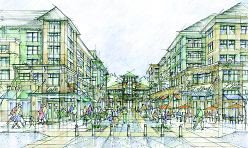
Submitted by Paul Ellis
While a similar proposal recently stirred angry debate among members of the Pierce County Council, the City of University Place might start charging developers to help fix traffic problems fueled by new shopping centers and neighborhoods.
Like other cities in Washington of similar size, University Place lost the majority of its state funding for capital improvements in the wake of Initiative 695's revenue cuts. While the city's neighborhoods are largely built out, construction of the new Town Center and the nearby Chambers Bay Golf Course virtually assure that hundreds--if not thousands--of additional vehicles will be rolling over the roads there in the near future.
In University Place, city leaders are preparing to ask voters to raise their property taxes to help pay for improvements to those roads and other capital facilities in the November election. In addition, the city's consultant, FCS Group of Seattle, says University Place could charge up to $4,903 for every vehicle trip a development creates during the busiest traffic hours. City staff are now gathering feedback from developers and could recommend an amount by the end of this year.
The fee ultimately charged will probably be lower than the amount floated by FCS. Currently, the highest traffic impact fee charged in Pierce County is the $3,000 levied by the City of Puyallup; Pierce County's traffic impact fee is unlikely to top that amount.
Paul Ellis is lead staff for RAMP; an employee of the Tacoma-Pierce County Chamber, Ellis led the Pierce County Transportation Advisory Committee (PCTAC), the community’s largest transportation planning effort.









